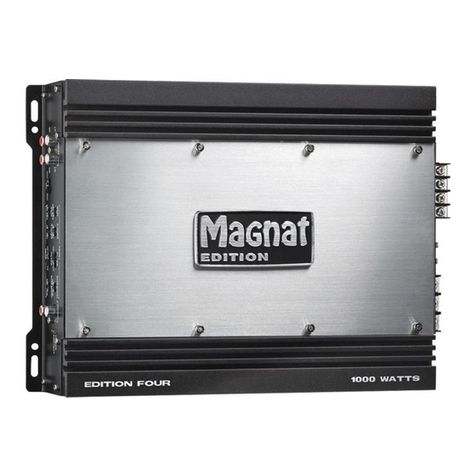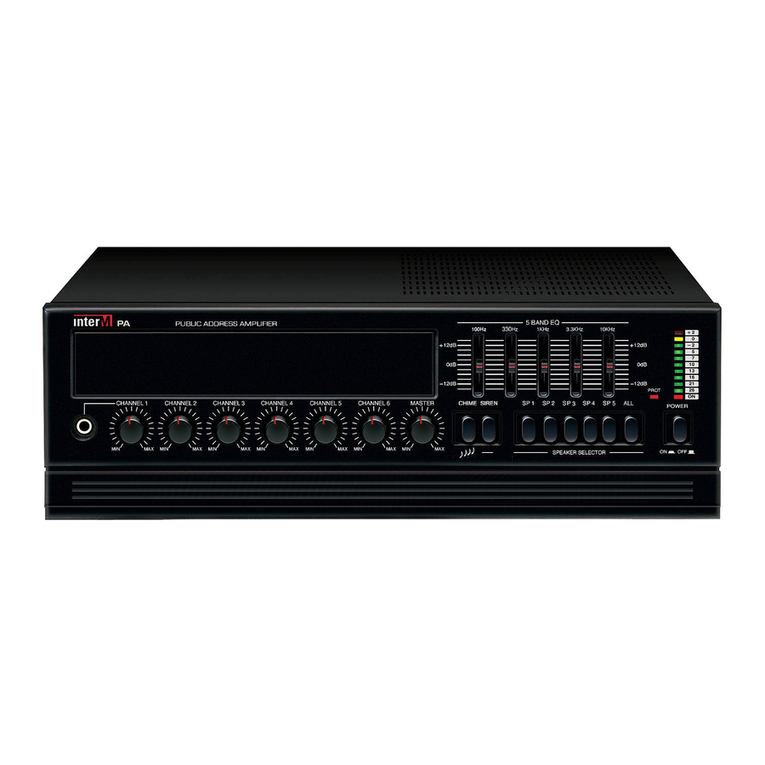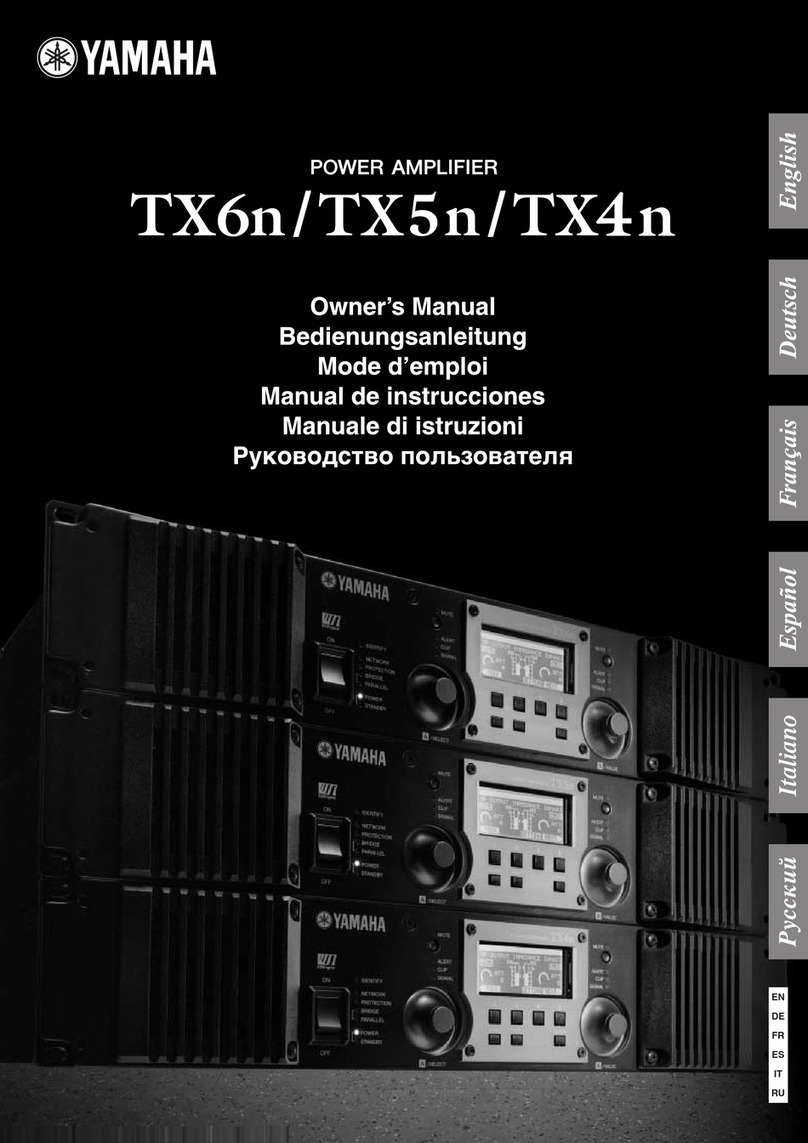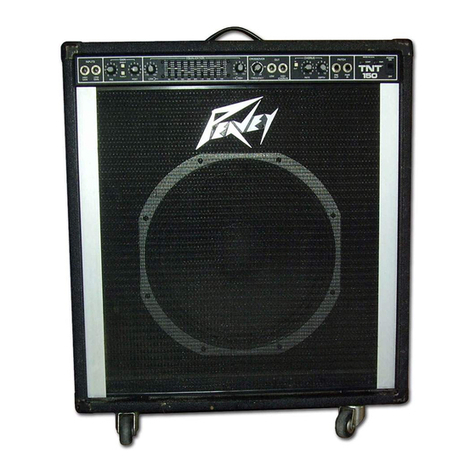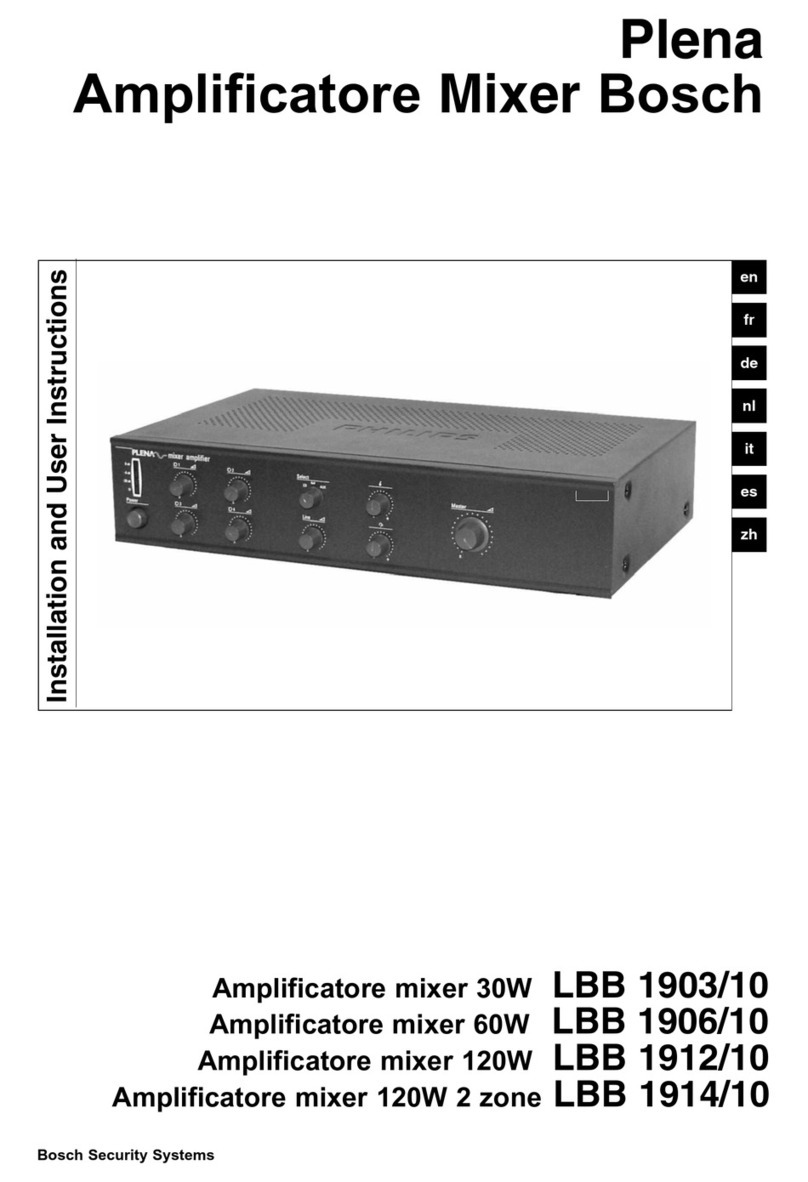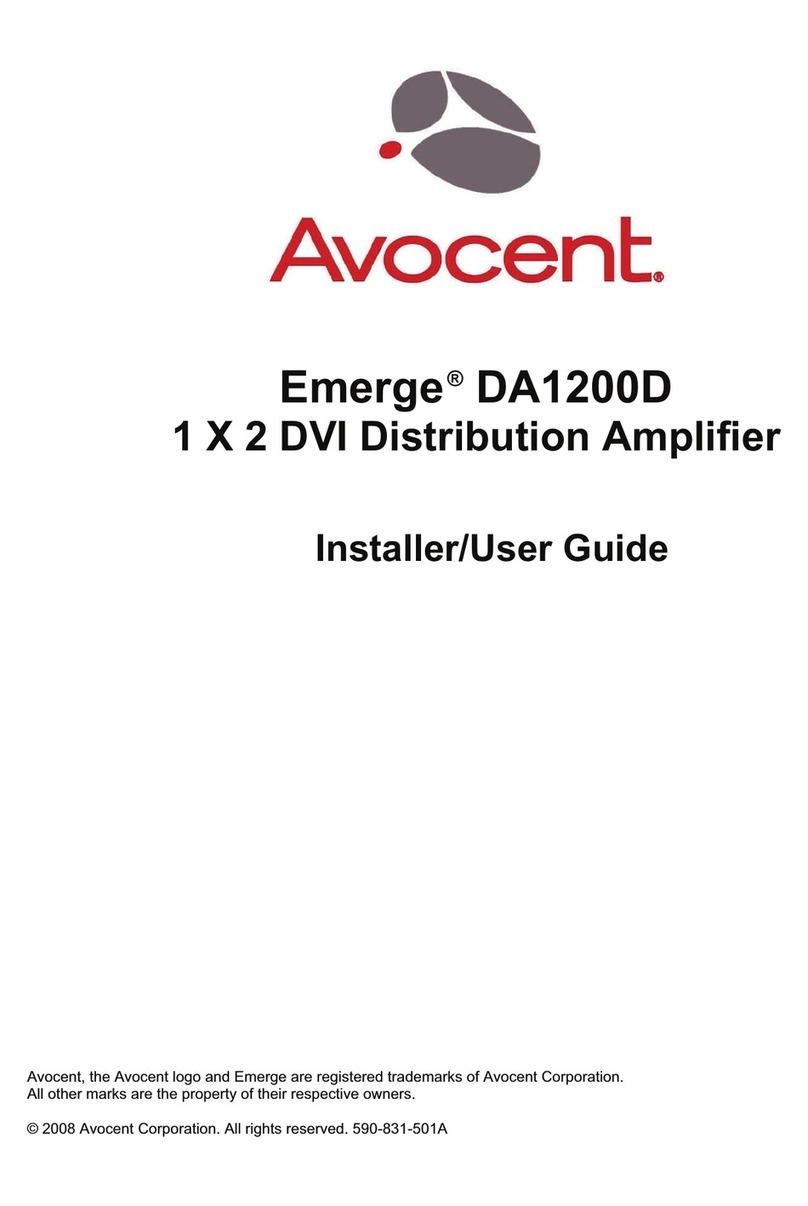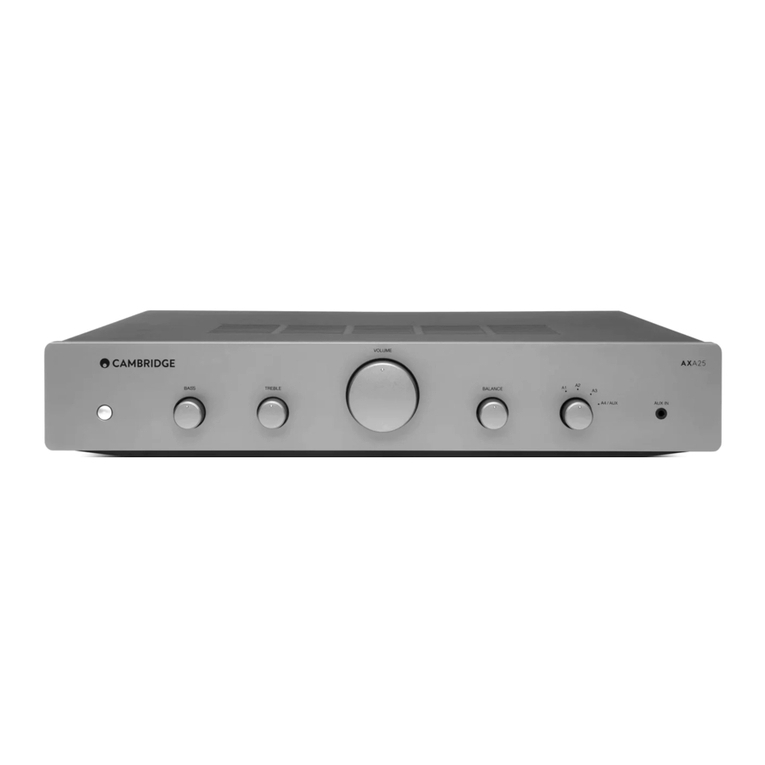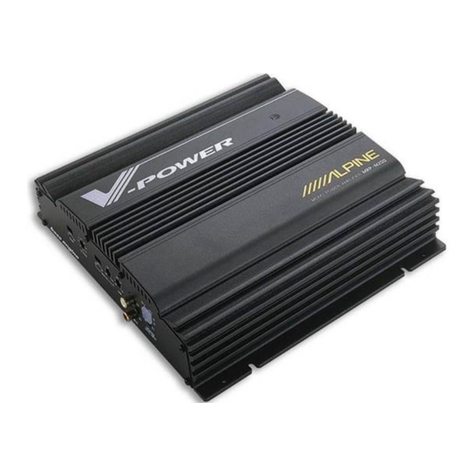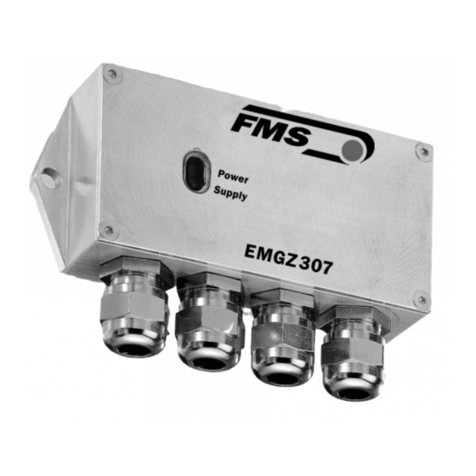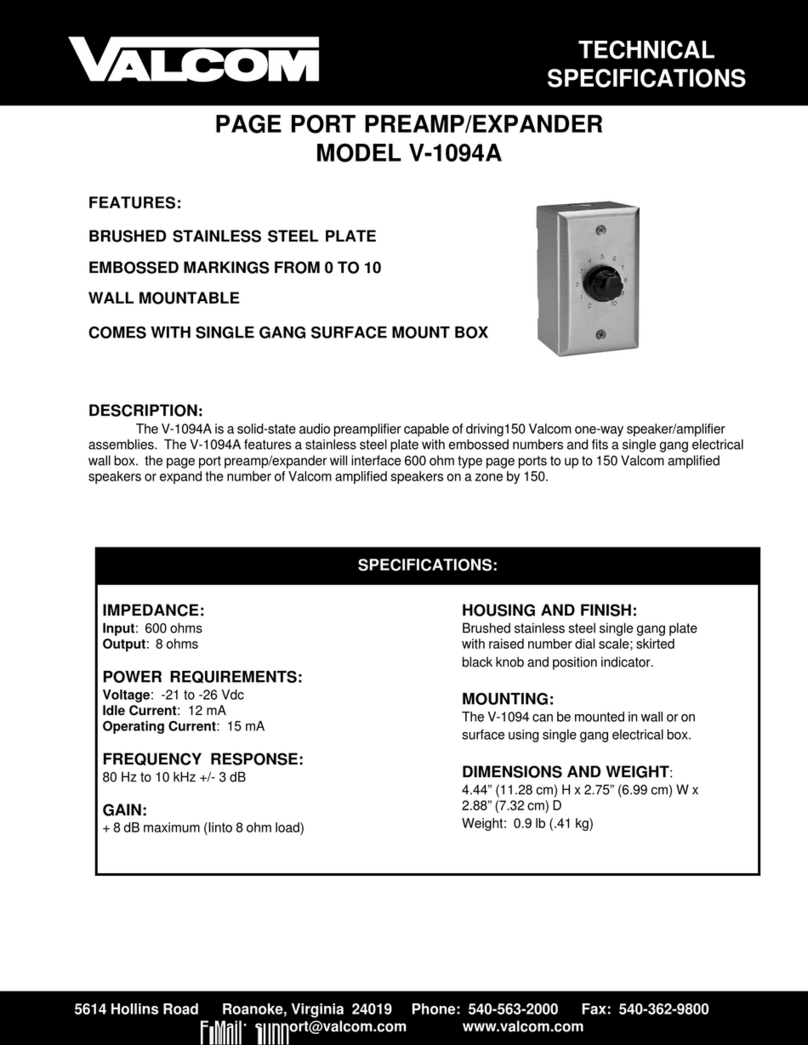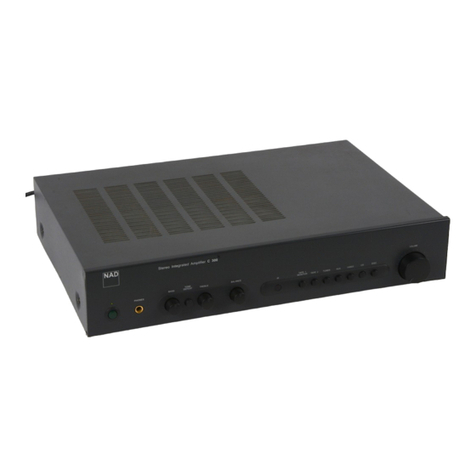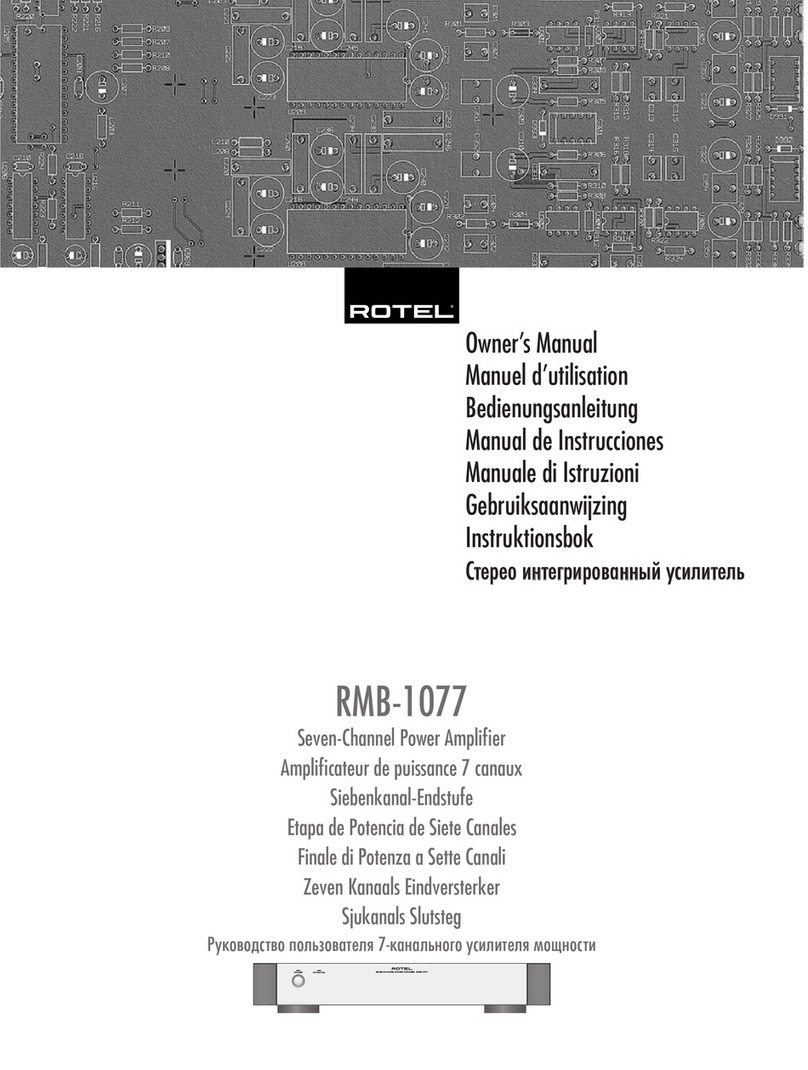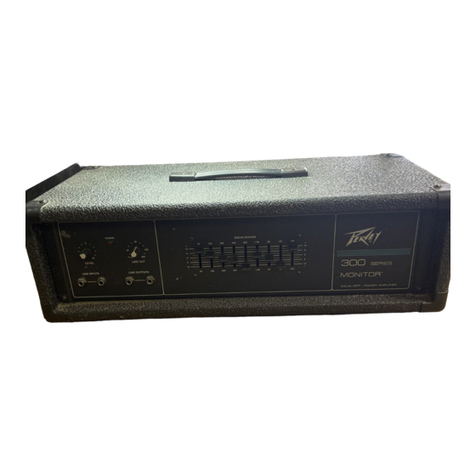Tone King Falcon Grande User manual

Tone King
Falcon Grande'
User’s Manual
Tone King Amplifiers
www.toneking.com
mail@toneking.com

1
Note from the Builder
Thank you for choosing the Falcon Grande. The Falcon Grande fills requests made by
Falcon owners over the years - specifically, a 12" speaker, footswitchable voicings, and
reverb. Although starting with these simple goals in mind, the design process led to a
number of new developments, resulting in complete redesign of the circuitry and
cabinetry. To this end, the Grande is a genuine new design, sharing very little with the
Falcon model, aside from it's basic shape and some of its' features.
The new ultralinear output stage design delivers the
same full-bodied sound, thick mids, and sweet top
end, but with perfectly controlled compression, and
very low hum. No matter how hard you push this
output stage, it will not become too compressed -
just more harmonically rich.
Incorporated is a
redesigned Tone King
reverb circuit. The 2 knob
circuit is more flexible than
the older circuit, in that
allows a wide range of dwell
settings, from a subtle
shimmer to a splashy surf sound. In addition, a new receiver
circuit is extremely transparent and capable of extracting more
detail and overtones from the reverb pan than the old design,
but it also has the warmth, depth, and organic qualities to
make it a perfect match for a vintage style amp like the Falcon
Grande.
We thank you for your purchase of this special version of the Imperial, and I hope you
enjoy playing it as much as we do.
Beat Regards,
Tone King Amplifiers

2
Safety Instructions
Please keep this instruction manual for future reference and for the duration of owning
this Tone King Amplifier. Please carefully read and understand the instructions inside
this user’s manual before attempting to operate your new amp. This instruction manual
includes essential safety information regarding the use and maintenance of the
amplifier. Take special care to heed all warning symbols and signs inside this manual
and those printed on the amplifier itself.
WARNING!
TO PREVENT FIRE OR SHOCK HAZARD, DO NOT EXPOSE THE AMPLIFIER TO
WATER OR MOISTURE. DO NOT OPERATE NEAR ANY WATER SOURCE
WHAT’S THE MEANING OF THIS?
The lightning flash with an arrow triangular symbol is intended to alert the user to the
presence of non-insulated “dangerous voltage” within the products enclosure, and may
be of sufficient magnitude to constitute a risk of electric shock
WHAT’S THE MEANING OF THIS?
The exclamation point triangular symbol is intended to alert the user to the presence of
important operating and maintenance (servicing) instructions in the user manual
accompanying this amplifier!
1. Read Instructions – All the safety and operating instructions should be read before
this product is operated.
2. Retain Instructions – The safety and operating instructions should be retained for
future reference.
3. Heed Warnings – All warnings on the amplifier and in the operating instructions
should be adhered to.
4. Follow Instructions – All operating and use instructions should be followed.
5. Water and Moisture – The amplifier should not be used near water – for example, a
bathtub, washbowl, kitchen sink, laundry tub, wet basement, or near a swimming pool,
and the like.
6. Carts and Stands – The amplifier should be used only with a cart or stand that is
recommended by the manufacturer.
An amplifier and cart combination should be moved with care. Quick stops, excessive
force, and uneven surfaces may cause the amplifier and cart combination to overturn.
7. Wall or Ceiling Mounting
– The product should never be mounted to a wall or ceiling.
8. Heat – Amplifier should be situated away from heat sources such as radiators, heat
registers, stoves, or other amplifier (including amplifiers) that produce heat.
9. Power Sources – This product should be operated only from the type of power source
indicated on the rating label.
If you are not sure of the type of power supply to your home, consult your product
dealer or local power company.
10. Grounding or Polarization
– This product may be equipped with a polarized alternation-current line plug (a plug
having one blade wider than the other). This plug will fit into the power outlet only one
way. This is a safety feature. If you are unable to insert the plug fully into the outlet, try

3
reversing the plug. If the plug should still fail to fit, contact your electrician to replace
your obsolete outlet. Do not defeat the safety purpose of the polarized plug.
11. Power-Cord Protection
– Power-supply cords should be routed so that they are not likely to be walked on or
pinched by items placed upon or against them, paying particular attention to the cord
in correspondence of plugs, convenience receptacles, and the point where they exit from
the amplifier.
12. Cleaning – The amplifier should be cleaned only as recommended by the
manufacturer. Clean by wiping with a cloth slightly damp with water. Avoid getting
water inside the amplifier.
14. Non-use Periods – The power cord of the amplifier should be unplugged from the
outlet when left unused for a long period of time.
15. Object and Liquid Entry
– Care should be taken so that objects do not fall and liquids are not spilled into the
enclosure through openings.
16. Damage Requiring Service
– The amplifier should be serviced by qualified service personnel when:
A. The power-supply cord or the plug has been damaged; or
B. Objects have fallen, or liquid has been spilled into the amplifier; or
C. The amplifier has been exposed to rain; or
D. The amplifier does not appear to operate normally or exhibits a marked change in
performance; or
E. The amplifier has been dropped, or the enclosure damaged.
F. The amplifier needs tube replacement or biasing
17. Servicing – The user should not attempt any service to the amplifier beyond that
described in the operating instructions.
All other servicing should be referred to qualified service personnel.
18. Ventilation – Slots and openings in the cabinet are provided for ventilation and to
ensure reliable operation of the product and to protect it from overheating, and these
openings must not be blocked or covered. The openings should never be blocked by
placing the product on a bed, sofa, rug, or other similar surface. This product should
not be placed in a built- in installation such as a bookcase or rack.
19. Attachments – do not use attachments not recommended by the product
manufacturer as they may cause hazards.
20. Accessories – Do not place this product on an unstable cart, stand, tripod, bracket,
or table. The product may fall, causing serious injury to a child or adult, and serious
damage to the product. Use only with a cart, stand, tripod, bracket, or table
recommended by the manufacturer, or sold with the product.
21. Lightning – For added protection for this product before a lightning storm, or when
it is left unattended and unused for long periods of time, unplug it from the wall outlet.
This will prevent damage to the product due to lightning and power line surges.
22. Replacement Parts – When replacement parts are required, be sure the service
technician has used replacement parts specified by the manufacturer or have the same
characteristics as the original part. Unauthorized substitutions may result in fire,
electric shock, or other hazards.
23. Safety Check – Upon completion of any service or repairs to this product, ask the
service technician to perform safety checks to determine that the product is in proper
operating condition.
24. FUSES – Always use the correct rating and type of fuse as indicated on the rear
panel. Note the proper rating fuse is determined by the AC line voltage in the country
this unit is being operated.
25. AC SELECT SWITCH: This switch must be set to match the AC line voltage in the
country this unit is being operated.
To change the setting, loosen (do not remove) the two screws above and below the slide
switch. Temporarily move the protective cover strip and slide the actuator to match the
voltage in your country. Place the protective cover strip back over the switch and
tighten the two screws.

4
Contents
1. Specifications
4
2. Front Panel Controls
5
Guitar Inputs
5
Volume and Tone
5
Voicing Selection
6
Reverb Controls
6
3. Back Panel Controls
7
AC Power
7
Fuse
7
Power Switch, Standby Switch
7
Footswitch
7
Speaker Jack
7
Attenuation Control
7
4. Dialing In Your Sound
8
Rhythm Voicing
8
Tweed Voicing
9
Lead Voicing
10
5. Ironman/II Attenuator
11
Purpose of the Attenuator
11
Attenuator Control
11
How to Use The Attenuator
12
Technical Details
12
6. Getting a Great Sound at Home
13
The Effect of Your Acoustical Environment
13
Floor Reflections
13
Where to Place the Amp
13
Carpeting
13
The Attenuator Can Help
14
7. Tube Installation and Replacement
15
Choice of Tube Types and Brands
15
Alternate Tube Choices
15
Installing Tubes
16
Replacing Output Tubes
16
Tube Quality
16
8. Warranty
17
9. CE Declaration
18

5
1. Specifications
Preamplifier
Channels: Single Channel with footswitchable Voicing Control
Tube Complement 2 x 12AX7
Controls: Volume, Tone, Voicing (Rhythm, Tweed, Lead)
Reverb
Type Full size 2-spring reverb pan
Controls: Dwell (drive level), Reverb (recovery / mix level)
Footswitch: Footswitch control of reverb (on/off)
Power Amplifier
Output Power 20W R.M.S.
Tube Type 2x5881, push-pull (2x6L6 may be used)
Biasing Scheme Cathode Biasing
Operating Mode Modified Ultralinear
Speaker
Manufacturer 12" Custom designed speaker made by Eminence
Impedance 8 Ohms
Magnet Type Ceramic, 38oz
Edge Doping Non-Doped
Power Attenuator
Type Ironman II Compensated Power Attenuator
Load Type Tuned Reactive Load
Attenuation Steps: 6 Steps: 0db, -3db, -9db, -15db, -24db, -36db
Compensation: Fletcher-Munson Volume Compensation Circuitry
Speaker Interface: Damping Factor Correction
Footswitch
Type 4-Button Footswitch with L.E.D. Indicators
Functions: Voicing Selection, Reverb on/off
Dimensions 21.5" W x 19" T x 11" D
Weight 34lbs

6
2. Front Panel Controls
Guitar Inputs
The Falcon Grande has two separate guitar
inputs - HI and LO. The HI input has more
gain, and the LO input has less gain.
One obvious use of these two inputs is to
compensate for the output level of your guitar
pickups. For example, you might want to use
the LO input for humbucking pickups, and
the HI input for single coils.
However, there is another, less obvious effect
related to the choice of HI or LO input. If
you switch from the HI to LO input, the
balance of gain among the preamp stages is
altered, which results in some tonal changes
in addition to the reduction in gain. Using
the LO input will give you a fatter, thicker
midrange, and a softer, sweeter top end.
Using the HI input will give you more clarity
and detail, and a sharper attack.
You might want to experiment with both HI
and LO inputs at each Voicing setting to
experience the tonal differences they provide.
Volume and Tone
It's quite easy to dial in a great tone with the
Falcon Grande, because of the minimal set of
preamp controls. The Volume control
determines the gain of the preamp, and thus
the volume level of the amplifier. The Tone
control adjusts the balance of high
frequencies to low frequencies, allowing some
broad tonal shaping. These two controls are
slightly interactive, meaning that the effect of
the Tone control is slightly different at
different Volume control settings. You can
think of them as operating in more or less the
same way as the Volume and Tone controls of
many classic vintage amps, such as the
tweed deluxe.

7
Voicing Selection
The Voicing switch allows you to select between three very distinct preamp voicings,
and is the key to the Falcon Grande's tonal versatility. As you toggle between voicing
selections, one of three completely separate and distinct tone shaping preamp circuits is
switched into the signal path, to transform the overall character of the tone.
You can select the Voicing in two ways:
1. Front Panel Voicing Switch
When the footswitch is disconnected from the amplifier, the front panel Voicing
switch controls the voicing selection.
2. Footswitch
When the footswitch is connected to the amplifier (the footswitch jack is located on
the rear panel), the front panel Voicing switch becomes inactive, and the Voicing
can only be selected by the footswitch.
Reverb Controls
The Falcon Grande's reverb circuit is an all-new design that offers more depth, more
flexibility, and an enhanced ability to extract subtle details from the full-size spring
reverb pan which generates the effect. The circuit includes both Dwell and Mix
(Reverb) controls, and the use of each should be understood in order to dial in the best
possible reverb sound.
Dwell Control
The Dwell control determines the level of the signal driving the spring reverb pan. In
general, this control can be thought of as controlling the "character" of the reverb
sound. As you turn up the dwell control, a more powerful driving signal is sent to the
reverb pan, which affects the sound of the reverb in several ways:
- at lower Dwell settings, the reverb is darker sounding, and more subtle.
- at higher Dwell settings, the reverb sound is brighter and 'splashier', and you begin to
hear more 'flutter', more overtones, and more of the the unique characteristics of the
spring reverb pan.
Reverb (Mix) Control
The Reverb (Mix) control determines the amount of reverb signal from the reverb pan
that is mixed with the dry signal. This is the same function performed by the "Reverb"
knob on most amplifiers that have a single knob reverb circuit (e.g. deluxe reverb). In
general, this control can be thought of as controlling the "amount" of reverb you hear.
NOTE ! Turning both the Dwell and Mix controls up all the way will result in an over-
the-top, surf guitar kind of reverb sound, with a lot of brash overtones and a long
reverb tail. This extreme setting is intended for special purpose uses, where an over-
the-top, out-of-control kind of reverb sound is desired as a special effect. It's not
intended for general use.

8
3. Back Panel Controls
AC Power
Always use a grounded AC cord, and make sure
that a proper ground connection is supplied to the
amp. Never attempt to lift or defeat the ground
connection to the amp.
Fuse
A standard 2A slo-blo fuse (style 3AG) should be
used.
Power Switch, Standby Switch
When powering up the amp, you should start with
both the Power and Standby switches in the "off"
position.
First, turn on the Power switch. This will apply
power only to the tube filaments and the low-
voltage circuitry.
After turning on the Power switch, allow the tubes
to warm up for about 1 minute, then turn on the
Standby switch.
The power-down sequence is not as important as
the power-up sequence, though I generally prefer
to turn off the power switch while leaving the
standby switch in the ON position.
Footswitch
Connect the footswitch to the amp with the
supplied cable, or with any standard 4-prong XLR
cable.
When the footswitch is connected to the amp, the
Voicing switch on the front panel will become
inactive, so voicing selection can only be done with
the footswitch.
Speaker Jack
The Falcon Grande has a single speaker with an
impedance of 8 Ohms. The speaker jack is located
on the side of the chassis, and is a standard 1/4"
jack. If you wish to use an extension speaker, it’s
best to use an 8-ohm speaker. You can connect it
with a standard ¼” mono speaker cable by pulling
out the plug from the internal speaker, and
plugging the cable into the speaker jack.
Attenuation Control
The Attenuation control determines the amount of
attenuation applied to the output of the amplifier
in order to reduce the amount of power sent to the
speaker, and thus control the volume of the amp.

9
4. Dialing in Your Sound
Rhythm Voicing
The Rhythm voicing is designed to deliver a fatter, warmer version of the classic mid-
60's clean tone, with a smoother, less spiky top end. This is a nice lush clean tone that
retains the sonic characteristics of the amplifiers that inspired it, such as the mid-60s
Deluxe Reverb. Here are a few sample settings you may want to try:
1. 60's Clean Rhythm Tone
2. Extra-Fat Clean Rhythm Tone
3. Pushed Clean
4. Surf Reverb
Guitar/
Pickups
Input
Volume
Tone
Reverb
Dwell
Single Coil
HI
4
4
5
5
Humbucker
LO
5
6
5
5
Guitar/
Pickups
Input
Volume
Tone
Reverb
Dwell
Single Coil
LO
7
4
5
5
Guitar/
Pickups
Input
Volume
Tone
Reverb
Dwell
Single Coil
HI
6.5
7.5
5
5
Humbucker
HI
5
7.5
5
5
Guitar/
Pickups
Input
Volume
Tone
Reverb
Dwell
Single Coil
HI
7.5
8
7
9

10
Tweed Voicing
The Tweed voicing is inspired by vintage classics like the Tweed Deluxe, Tweed
Bassman, and others of the period. This is very versatile voicing. At lower volume
settings, the clean tone is thick and warm, with a nice presence in the midrange and a
silky top end. This makes it great for fattening up a tele, or even for an authentic 50's
jazz sound with a hollowbody guitar. As you crank up the volume, the power tubes add
some growl and subtle compression, which you can control with your pick attack and
playing style, for an expressive sound like you might hear on the Steely Dan records of
the 70s. Crank it up, and you'll get the milkshake-thick grind that tweed amps are
known for. Here are a few sample settings:
1. Fat Clean Tone
2. Edge of Overdrive
2. Hot Tweed Crunch
Guitar/
Pickups
Input
Volume
Tone
Reverb
Dwell
Single Coil
HI
3
3
4
4
Humbucker
LO
4
4
4
4
Guitar/
Pickups
Input
Volume
Tone
Reverb
Dwell
Single Coil
HI
5
5
3
3
Humbucker
HI
4
7
3
3
Guitar/
Pickups
Input
Volume
Tone
Reverb
Dwell
Single Coil
HI
8
5
3
3
Humbucker
HI
8
6
3
3

11
Lead Voicing
The Lead voicing adds a little Valco/Supro mojo to the basic Tweed sound, for a unique
and authentic old-school guitar tone. If you plug into the LO gain input, and keep the
volume control down relatively low, this setting conjures the sound of early blues and
rock & roll with a rounded, boxy, semi-clean tone that captures that distinctive
character found on recordings from the '50s by artists such as Chuck Berry, Bill Haley,
etc. If you plug into the HI gain input, and crank it up, the amp really comes alive. This
voicing gives you plenty of gain for a nice chunky hot-tweed lead sound, while the
unique 5881 output stage helps prevent it from becoming too compressed, fizzy, or
buzzy, no matter how hard you drive it. Even with single coils, you can dial in a nice
thick crunch like you might hear on the old ZZ Top records.
1. 1950's Rock & Roll
2. Crunchy Lead
Guitar/
Pickups
Input
Volume
Tone
Reverb
Dwell
Single Coil
LO
6
4
3
3
Humbucker
HI
5
4
3
3
Guitar/
Pickups
Input
Volume
Tone
Reverb
Dwell
Single Coil
HI
9
5
5
2
Humbucker
HI
8
7
5
2

12
5. Ironman/II Attenuator
Purpose of the Attenuator
In the Falcon Grande, virtually all overdrive and
distortion are generated by the phase inverter and
output tubes. Output stage distortion has a
different sound and feel than distortion generated in
the preamplifier, and this is big part of the Falcon
Grande's unique tone. The difficulty with this type of
design is that overdrive and distortion can only be
achieved at maximum output power (and therefore
maximum volume).
Operating the amp at maximum volume isn't practical for all playing conditions, so a
power attenuator is an effective and necessary solution to control the volume level while
allowing the output tubes to operate at full output power.
A power attenuator is a circuit which is connected between the output of the power
amplifier and the speaker. It allows you to selectively send some fraction of the power
generated by the output tubes to the speaker, with the rest dissipated in a built-in load
circuit, as shown in the diagram below:
Attenuator Control
On the Attenuation dial, 0db is the loudest setting. At this setting, the attenuator is
fully bypassed, and the speaker is connected directly to the output of the amplifier.
The –36db setting is the quietest setting. At this setting, most of the power generated
by the output tubes is absorbed by the attenuator's load circuit, and only a few dozen
milliwatts of power are sent to the speaker.

13
How to Use the Attenuator
First, lets start with the basics of how to use the attenuator. For practical purposes,
the Attenuation knob can be thought of as providing the same function as a “master
volume” control. This means that you will use the “Volume” controls to adjust the gain
of the preamp and the amount of overdrive/distortion you wish to dial in, and you will
use the “Attenuation” dial to set the volume level that you wish to produce.
You may wish to experiment to confirm this behavior. For example, try selecting the
lead voicing, and set the amp up like this:
Volume
Tone
Voicing
Reverb
Dwell
Attenuation
7
7
Lead
4
5
-24db
Now, while playing through the amp, try turning the Volume control up and down a bit.
You will see how slight changes in the Volume control will make the tone more or less
distorted, but won’t have much effect on the volume level in the room. The reason for
this is that the output stage of the amplifier is already generating maximum output
power even if the amp is only just on the edge of breakup. As you turn up the Volume
control past this point, the output stage cannot produce any more power – it just
becomes more overdriven.
After trying that experiment, set the volume control back to 7, where you started, and
try adjusting the attenuation knob on the back of the amp. You will see that the
volume level in the room changes, but the amount of overdrive and distortion does not.
This is the purpose of the attenuator.
Technical Details
The Falcon Grande's Ironman II attenuator is a fairly sophisticated unit containing
certain features that make it very effective at maintaining the cranked amp sound at
even very low volume. Here are few technical details of these design features:
Tuned Reactive Load
To preserve the natural response and feel of an amplifier, it is critical that the output
tubes see the proper loading. The Tuned Reactive Load of the Ironman-II closely
mirrors the impedance curve of a real speaker, which results in a more natural
tone and feel than the simple resistive load used in most attenuators.
Volume Compensation Circuitry
The ear perceives sound differently at low and high volume levels, which is why many
attenuators may sound thin and muffled at lower settings. The Ironman-II overcomes
this phenomenon with its' proprietary Volume Level Compensation Circuitry, which
adjusts the tonal balance at each attenuation step, to ensure that the sound you hear is
always as deep, rich, and present at low volume as it is at high volume.
Damping Factor Correction
A loudspeaker performs differently when driven with very little power, compared to its
response at full power. The Ironman-II's Damping Factor Correction Circuitry
compensates for this effect, making the speaker perform more naturally at low
volume so it retains the feel of a cranked amp, even at bedroom volume.

14
The Attenuator Can Help
So far, we’ve discussed using the attenuator to control the volume in the case where
we’re driving the amp into overdrive and distortion. However, it can also help with
clean tones in a problematic room as well.
Usually, in a good sounding room, you would set the attenuation knob to 0db or bypass
the attenuator when dialing in a clean tone. This always gives you the most headroom,
and the most apparent clarity and dynamics.
However, if you are finding that the amp sounds harsh in your room, and that it’s hard
to control the volume because you are using a setting between 1 and 2 on the Volume
knob, then the attenuator can help. Try setting the attenuator down a few steps (e.g.
try it at –15db), plug into the LO input, and turn the Volume control up a bit to
compensate. You should find that this smoothes out the upper mids and fattens up the
tone without losing presence.
5. Tube Installation and Replacement
Choice of Tube Types and Brands
The following tube types are recommended:
No. Type and Brand Function
V1 TAD 12AX7A-C Preamplifier
V2 TAD12AX7A-C Phase Inverter
V3-V4 Tung Sol 5881 Output Tubes
Output Tube Choices:
The Falcon Grande is designed to accept 5881 output tubes.
You may also install 6L6s in the Falcon Grande. 6L6s are a drop-in replacement, with
no adjustments necessary. In the Falcon Grande, 6L6s will have a bit later breakup,
but may be a bit glaring in the top end.
Alternate Tube Choices You May Want to Try
If the preamp is too gainy for your taste, and you find that you’re setting the volume
controls down quite low to get sufficient clean headroom, you may want to try swapping
in either a 12AU7 or 5751 in the V1 position.

15
Installing Tubes
When installing tubes, you may find it helpful to lay the amp on its side, on a table, and
shine a light directly into the back of the amp, to aid in locating the position of each
tube. Tubes must be installed in the correct orientation.
The 12AX7 tubes have a blank space in the ring of pins which must line up with the
blank space in the ring of pins in the tube socket, located on the chassis.
The 5881 tubes have a small cylinder with an indexing key in the center of the ring of
tube pins, and this indexing key must match up with the corresponding slot in the
socket on the chassis.
Replacing Output Tubes
The output stage of the Falcon Grande is cathode biased, and no bias adjustment is
necessary when changing output tubes. The design of the Falcon Grande’s output
stage allows a fair amount of margin for variation in tube characteristics, so any known
brand of 5881 or 6L6 will work properly and be correctly self-biased.
Tube Quality
Currently manufactured tubes are built in China, Russia, or the Czech Republic, and
are not built to the same quality standards as tubes manufactures by the U.S.
manufacturers in the “glory days” of tube manufacturing.
We musicians choose to use to vacuum tubes because of their tone, but we need to
accept that the tubes available to us these days can be imperfect devices, and are most
certainly the least reliable component in the entire amplifier.
It would seem that the obvious solution would be to use new-old-stock tubes that were
made back in the “glory days”, when tubes were properly made. However, we’ve lately
been finding that much of the available stocks of such “new old stock” tubes are either
gassy, noisy, or unreliable – we do believe that we’ve reached the bottom of the barrel of
NOS tubes.
Tube problems generally reveal themselves as a crackling noise or microfonics which
can occur continuously, sporadically, in response to mechanical vibration, or –
especially in Combo amplifiers - in response to your playing (e.g. a crackling or other
type of noise which occurs only when you hit a note).
We subject all tubes to a thorough burn-in and test procedure to ensure that they are
fully up to spec and operating perfectly. However, you must be aware that the majority
of tube failures occur early in their life, and may come about as a result of the jostling
and jarring that an amp can receive in shipping. In spite of the exhaustive testing we
perform at the shop, early-life tube problems cannot always be found in such testing.
The first two months or so are the most tenuous period for any set of tubes. Most
manufacturing defects will be revealed in the first two months of their life, but many are
not detectable in initial testing, even after a burn-in period.
If you notice any noises, crackling, humming or any other odd behavior of your
amplifier in this period, note that it is most likely to be the result of a defective tube,
and should be debugged as such.

16
TONE KING LIMITED LIFETIME WARRANTY
Thank you for choosing Tone King. Tone King manufactures some of the world’s
most reliable hand-wired, all-tube amplifiers and speaker cabinets. Tone King
takes great pride in an extremely thorough testing procedure which is
implemented on each product prior to shipment. In the unlikely event that you
have a problem with you amplifier, please refer to warranty below. Tone King
stands behind our products like no other and we’re here to help you!
AMPLIFIERS: Tone King offers a limited lifetime warranty to the original purchaser that
a Tone King amplifier will be free from defects in material and workmanship. A dated
sales receipt will establish coverage under this warranty, PLEASE KEEP YOUR PROOF
OF PURCHASE TO USE YOUR WARRANTY. This warranty does not cover service or
parts to repair damage caused by accident, neglect, abuse, normal & wear, disaster,
misuse, abuse, over-powering, negligence, inadequate packing or shipping procedures
and service, repair or any modifications to the product which have not been authorized
or approved by Tone King in writing. ANY MODIFICATION TO THE AMPLIFIER WILL
VOID YOUR WARRANTY. If this product is defective in materials or workmanship as
warranted above, your sole remedy shall be repair or replacement by Tone King as
provided below.
CAUTION: Do NOT attempt to repair, modify or service your amplifier by
yourself!!! Please read the instruction manual for all safety notifications,
warnings and instructions. Tone King, like all tube amplifiers, have extremely high
voltages that can cause serious injury or death. Do not remove the chassis from the
amplifier. All repair and service work must be performed by Tone King or an authorized
service center of Tone King. ANY UNAUTHORIZED REPAIRS WILL VOID YOUR
WARRANTY.
TUBES: Tone King warrants the original purchaser that the specific tubes used in Tone
King will be free from defects in material and workmanship for a period of 90 days from
the original date of purchase. A dated sales receipt will establish coverage under this
warranty. This tube warranty will automatically terminate 90 days after the original
retail sales date. This tube warranty is in lieu of all other expressed warranties. If tubes
fail within the 90 day warranty period your sole remedy shall be replacement of tubes
as provided below.
RETURN PROCEDURES: In the unlikely event that a defect occurs please call us at
818-505-0391. In most cases we can help you diagnose the problem over the phone. If
a product must be sent to us, please follow the procedure outlined below.
•Defective products must be shipped, together with proof of purchase, freight pre-
paid and insured to the Authorized Tone King Service Center or directly to Tone
King.
•If a product must be returned to Tone King for warranty replacement/repair, a
Return Authorization Number must be obtained from our Customer Service
Department prior to shipping the product.
•Please contact Tone King Customer Service Department for the Authorized Tone
King Service Center nearest you.
•Products must be shipped in their original packaging or its equivalent; in any
case, the risk of loss or damage in transit is to be borne by the purchaser.
•The Return Authorization Number must appear in large print directly below the
shipping address.
•Always include a brief description of the defect, along with your correct return
address and telephone number.

17
•When calling to inquire about a returned product, always refer to the Return
Authorization Number.
If Tone King determines that the unit was defective in materials or workmanship at any
time during the warranty period, Tone King has the option of repairing or replacing the
product at no additional charge, except as set forth below.
•All replaced parts become a property of Tone King. Products replaced or repaired
under this warranty will be returned via ground shipping within the United
States or Canada - freight prepaid.
•Tone King is not responsible for costs associated with expedited shipping, either
to Tone King or the return of the product to the customer.
All warranty repairs outside the United States and Canada must be directed to the
dealer or distributor from which you purchased the product.
INCIDENTAL OR CONSEQUENTIAL DAMAGE: In no event will Tone King be liable for
any incidental or consequential damages arising out of the use or inability to use of any
Tone King product, even if a Tone King dealer has been advised of the possibility of
such damages, or any other claim by any other party. Some states do not allow the
exclusion or limitation of consequential damages, so the above limitation and exclusion
may not apply to you. This warranty gives you specific legal rights and you may also
have other rights which may vary from state to state.
FOR YOUR PROTECTION: Please complete the warranty registration online at
www.toneking.com within (10) ten days of the date of purchase so that we may contact
you directly in the event a safety notification issued in accordance with the 1972
Consumer Product Safety Act.
CUSTOMER SUPPORT: Our dedicated and friendly staff is ready to help you with any
warranty or product questions you may have. Please call us at 323-277-4100 – Monday
– Friday 9AM-4PM (Pacific Standard Time)
Thank you again for choosing Tone King and we look forward to a long relationship!

18
CE Declaration
Other manuals for Falcon Grande
2
Table of contents
Other Tone King Amplifier manuals
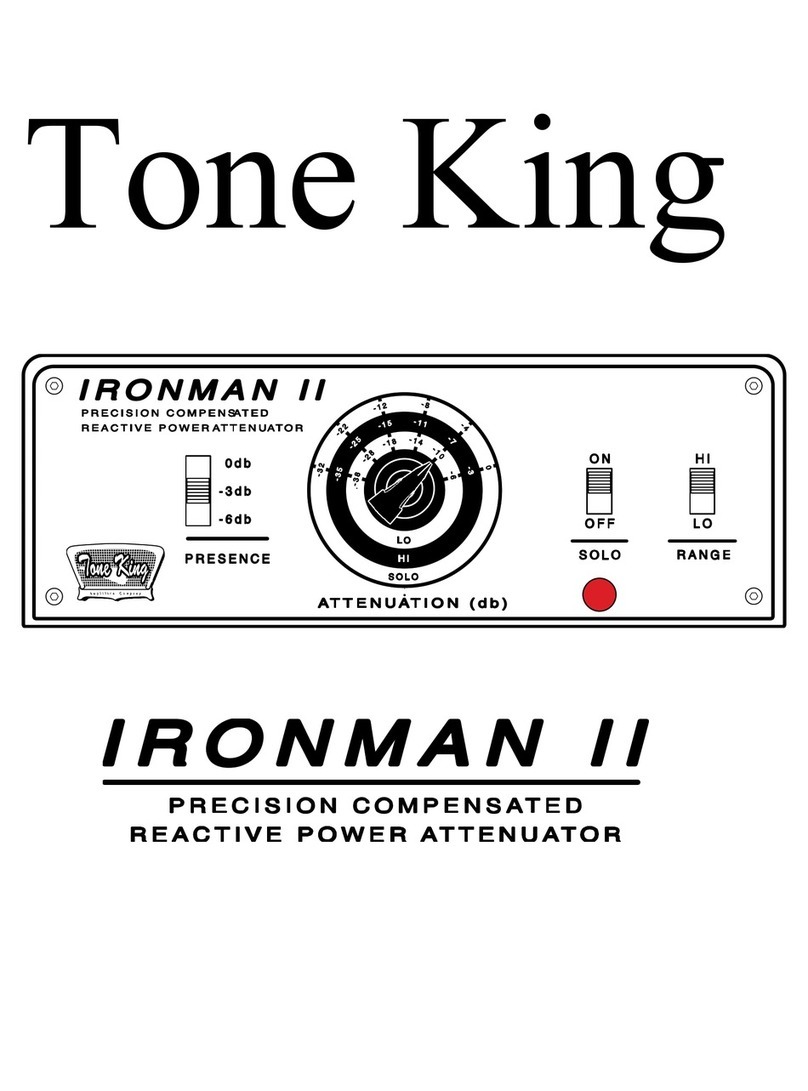
Tone King
Tone King Ironman II User manual
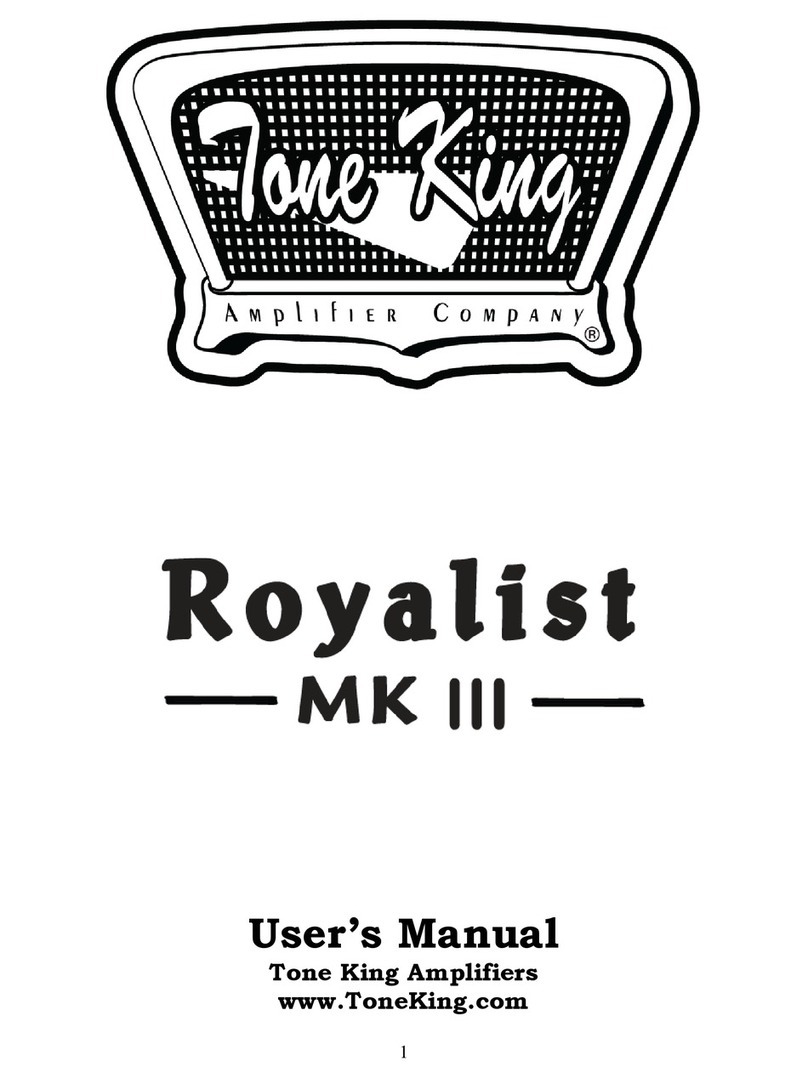
Tone King
Tone King Royalist MK III User manual
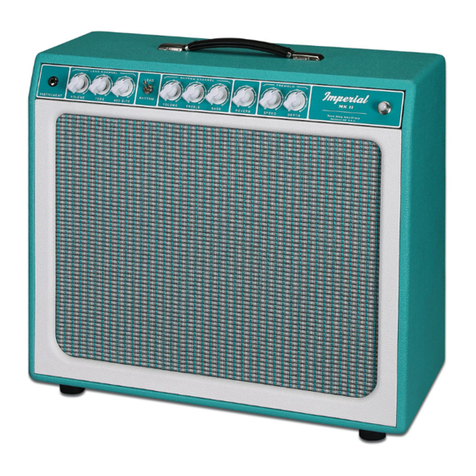
Tone King
Tone King Imperial MK II User manual
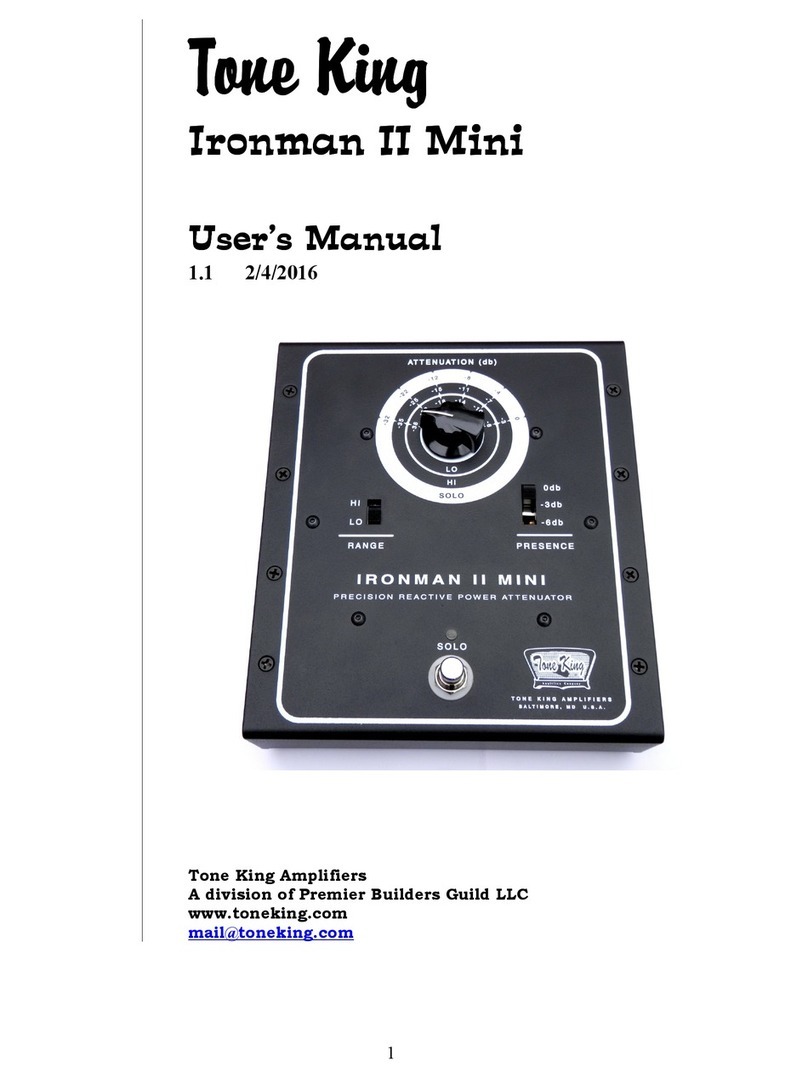
Tone King
Tone King Ironman II Mini User manual
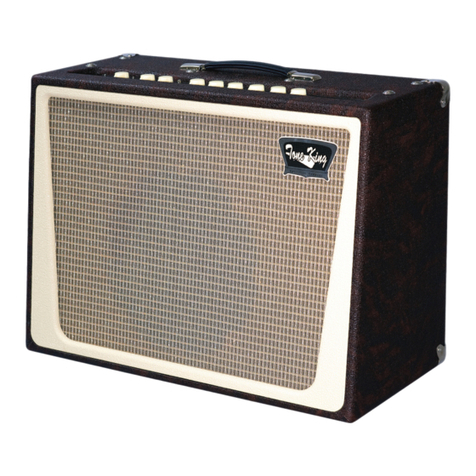
Tone King
Tone King Metropolitan User manual

Tone King
Tone King Tone King "Sky King" User manual

Tone King
Tone King Falcon Grande User manual

Tone King
Tone King Tone King "Sky King" User manual
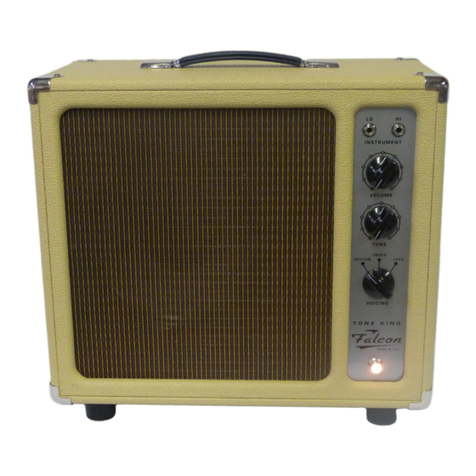
Tone King
Tone King FALCON User manual
